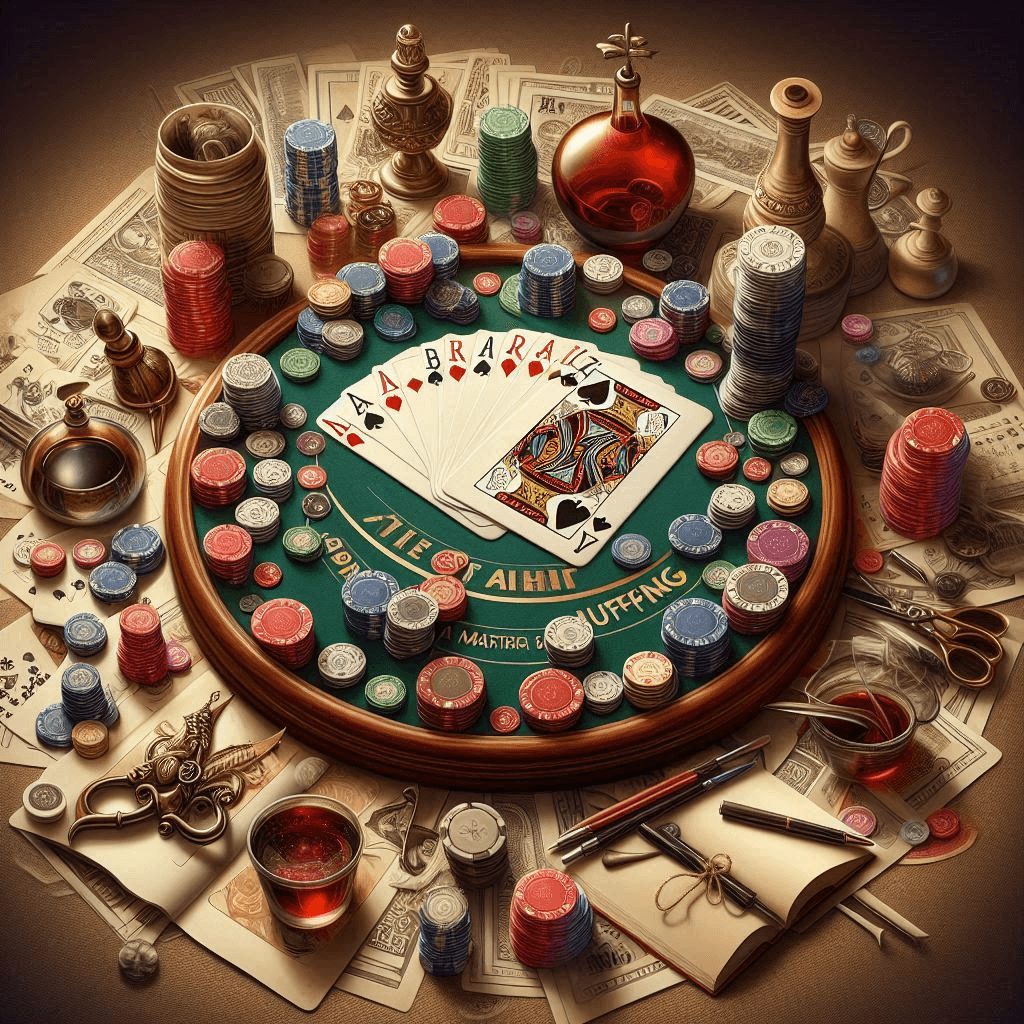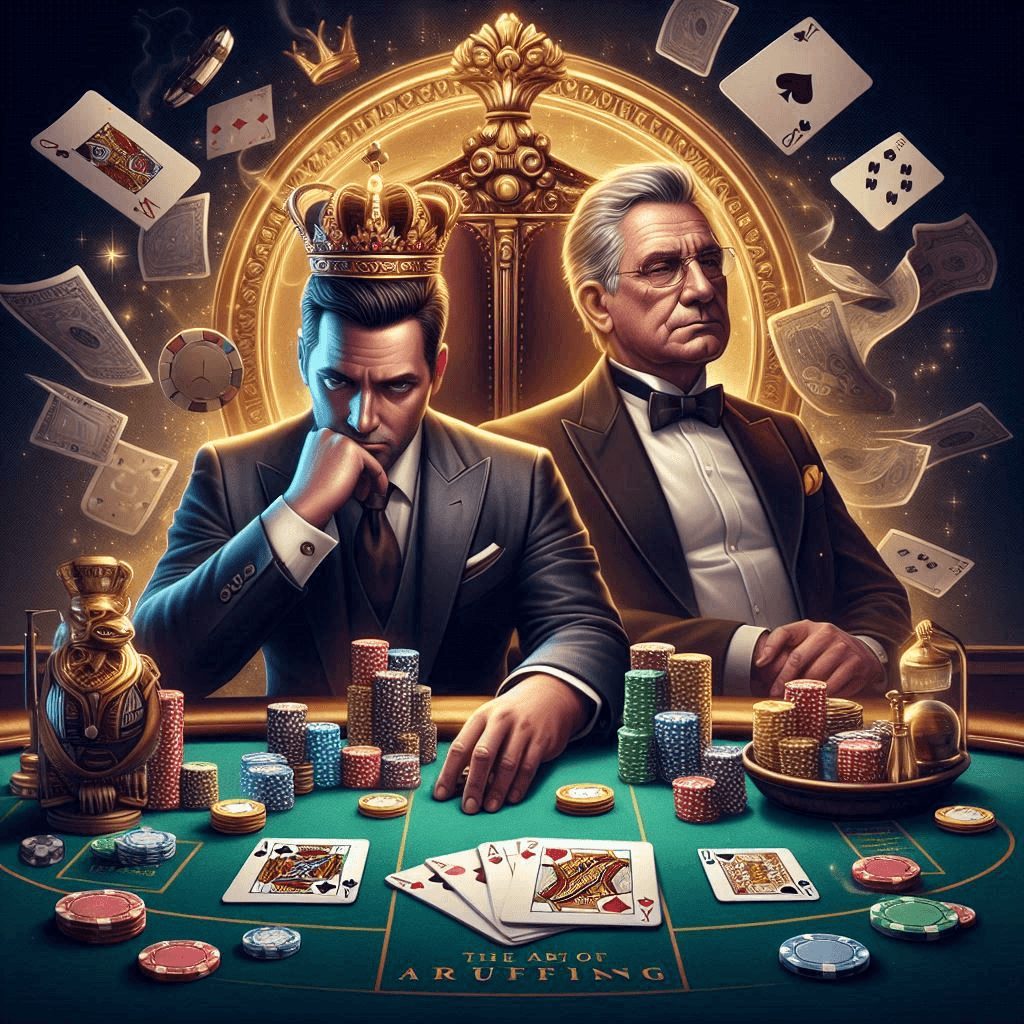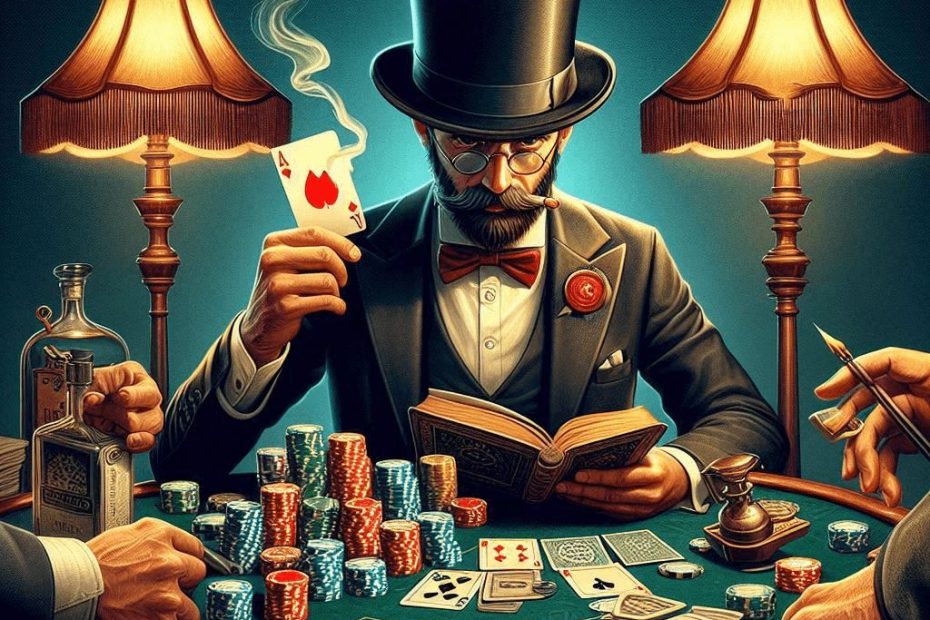Bluffing is an art form in the realm of table games, especially in poker, where the stakes are high and the psychological warfare is intense. Mastering the art of bluffing can be the difference between winning and losing, and it requires a blend of strategy, psychology, and keen observation. This article delves into the intricacies of bluffing, exploring its significance in poker and other table games, the strategies involved, and the psychological factors that come into play. Whether you’re a novice looking to learn the basics or an experienced player aiming to refine your skills, understanding the art of bluffing can elevate your game to new heights.
Understanding Bluffing
What Is Bluffing?
It is the act of deceiving opponents into believing that you have a stronger hand than you actually do. It can also involve making them think you have a weaker hand to induce them to fold. It is a crucial aspect of poker and many other table games, where the ability to read opponents and manipulate perceptions can lead to significant advantages.
History of Bluffing in Poker
It has been a part of poker since the game’s inception. Early versions of poker were played with simple rules, but as the game evolved, so did the strategies surrounding it. Today, It is recognized as a fundamental aspect of poker strategy, celebrated in popular culture and professional tournaments alike.
The Psychology of Bluffing
Why Do Players Bluff?
Players bluff for various reasons, including:
- To Gain an Advantage: It can intimidate opponents, potentially forcing them to fold stronger hands.
- To Protect a Weak Hand: By, players can protect themselves when they suspect their hand is weak compared to their opponents.
- To Manipulate Opponents’ Behavior: A well-timed bluff can disrupt opponents’ strategies and induce mistakes.
The Role of Emotion
Emotions play a significant role in bluffing. Understanding your own emotional state and that of your opponents can enhance your bluffing strategy.
- Confidence: A confident player is often more convincing. If you believe in your bluff, your opponents are more likely to believe it too.
- Fear and Anxiety: Players who are fearful or anxious may be more susceptible to bluffs. Recognizing these emotions in others can provide opportunities to exploit them.
Types of Bluffs
Pure Bluff
A pure bluff occurs when a player has no chance of winning with their hand and relies entirely on the strength of their bluff to win the pot.
Characteristics
- Relying on Fear: Pure bluffs aim to instill fear in opponents, making them fold superior hands.
- High Risk, High Reward: While pure bluffs can yield large pots, they also carry the risk of losing if opponents call.
Semi-Bluff
A semi-bluff is when a player has a hand that may improve in the future, but it is currently weak. This type of bluff can be safer, as it allows for the possibility of winning in multiple ways.
Characteristics
- Dual Strategy: A semi-bluff can win by forcing opponents to fold or by improving to a stronger hand on future streets.
- Lower Risk: Since the player has some potential for improvement, the risk of a semi-bluff is lower than that of a pure bluff.


The Mechanics of Bluffing in Poker
Reading Your Opponents
Successful bluffing requires a deep understanding of your opponents’ tendencies and behaviors. Here are some key aspects to consider:
- Betting Patterns: Pay attention to how your opponents bet. Are they aggressive or passive? Do they tend to fold easily?
- Body Language: Non-verbal cues can reveal a lot about an opponent’s confidence. Look for signs of nervousness or overconfidence.
- Game Dynamics: Consider the overall dynamics of the table. Is it a tight or loose table? Understanding the flow of the game can inform your bluffing strategy.
Timing and Position
The timing of your bluff and your position at the table can significantly affect its success.
- Late Position Advantage: Bluffing from a late position can be more effective, as you have more information about how your opponents have acted.
- Choosing the Right Moment: Bluffing after a scare card hits the board or during a strong betting round can enhance the effectiveness of your bluff.
Bet Sizing
The size of your bet can influence the perception of your hand strength. Here are some considerations:
- Large Bets: A large bet can indicate strength, but it can also scare opponents into folding. Use this to your advantage when bluffing.
- Small Bets: A smaller bet may be perceived as a sign of weakness, which can lead to calls. Be cautious when using smaller bets in a bluff.
Advanced Bluffing Strategies
The Double Bluff
A double bluff involves bluffing when you actually have a strong hand, aiming to induce your opponents to call. This strategy can be highly effective if executed well.
Implementation
- Establish a Narrative: Create a story with your betting patterns that suggests you have a weak hand.
- Read Your Opponents: Ensure your opponents are likely to believe your narrative and take the bait.
The Induced Bluff
An induced bluff occurs when you purposely play weakly to encourage your opponents to bluff against you. This can be a powerful strategy if executed correctly.
Implementation
- Play Passively: Use a passive strategy to create the illusion of weakness.
- Encourage Aggression: Allow your opponents to take control of the betting, leading them to believe they can outplay you.
The Stone Cold Bluff
A stone-cold bluff is executed when you have no chance of winning with your hand, and you are betting to force your opponents to fold.
Implementation
- Read the Table: Ensure the table dynamics support a stone-cold bluff.
- Commit Fully: Commit to the bluff with confidence to maximize the chance of success.
Bluffing in Other Table Games
While poker is the most recognized game for bluffing, other table games also offer opportunities for strategic deception. Here are a few examples:
Blackjack
In blackjack, bluffing can take the form of “table talk” or misleading body language. Players might try to mislead others about their hand strength or intentions, especially in tournament settings.
Baccarat
In baccarat, players can bluff by varying their betting patterns or by reading the behavior of the banker and other players. Understanding the psychological aspects can influence decisions about when to bet big or fold.
Bridge
In bridge, bluffing is often referred to as “finessing.” Players may play cards in a way that misleads opponents about the strength of their hand, creating opportunities for unexpected wins.
The Ethics of Bluffing
Is Bluffing Ethical?
The ethics of bluffing can be a contentious topic among players. While bluffing is a recognized part of many table games, it raises questions about fairness and integrity.
- Acceptable Deception: In the context of the game, bluffing is generally accepted as part of the strategy. However, ethical considerations arise when players use deception outside the game’s framework, such as collusion or cheating.
- Respecting the Game: Bluffing should enhance the enjoyment and challenge of the game rather than undermine it. Players must balance their strategies with respect for their opponents.
The Emotional Impact of Bluffing
Winning and Losing
Bluffing can evoke strong emotional responses, both positive and negative. Understanding these emotions is crucial for managing your gameplay.
- Euphoria of Success: Successfully game can lead to feelings of elation and confidence, reinforcing the desire to bluff again.
- Frustration of Failure: Conversely, a failed bluff can lead to frustration and self-doubt. Players must learn to cope with these emotions and not let them affect future decisions.
Managing Tilt
Tilt refers to a state of emotional frustration that can lead to poor decision-making. Bluffing can contribute to tilt, especially after a failed attempt.
- Recognizing Tilt: Players should be aware of their emotional state and recognize when they are on tilt.
- Taking Breaks: Stepping away from the table can help players regain composure and approach the game with a clear mind.
Conclusion
The art of game is a complex interplay of psychology, strategy, and emotional intelligence. Mastering this skill can significantly enhance your performance in poker and other table games. By understanding the motivations behind bluffing, the various strategies involved, and the psychological factors at play, players can develop a more nuanced approach to their gameplay. As with any skill, practice and experience are essential for refining your bluffing techniques. Ultimately, the ability to bluff effectively not only increases your chances of winning but also adds a layer of excitement and complexity to your gaming experience.
FAQs
-
What is the best situation to attempt a bluff?
The best situation to attempt a bluff is when you are in a late position, have observed your opponents’ betting patterns, and the board presents a favorable scenario for a strong hand.
-
How can I tell if someone is bluffing?
Look for inconsistencies in their betting patterns, body language cues such as nervousness, and deviations from their usual play style. However, keep in mind that reading opponents requires practice and experience.
-
Is bluffing necessary to win at poker?
While bluffing is an important tool in poker, it is not strictly necessary to win. Successful players often balance their strategies between bluffing and playing strong hands.
-
Can bluffing be used in other games besides poker?
Yes, bluffing can be used in various table games, including blackjack, baccarat, and bridge. The principles of deception and reading opponents apply across many formats.
-
How can I manage my emotions after a failed bluff?
Recognizing your emotional state is crucial. Take breaks, reflect on the situation, and avoid making impulsive decisions. Practicing mindfulness techniques can also help you regain composure.
